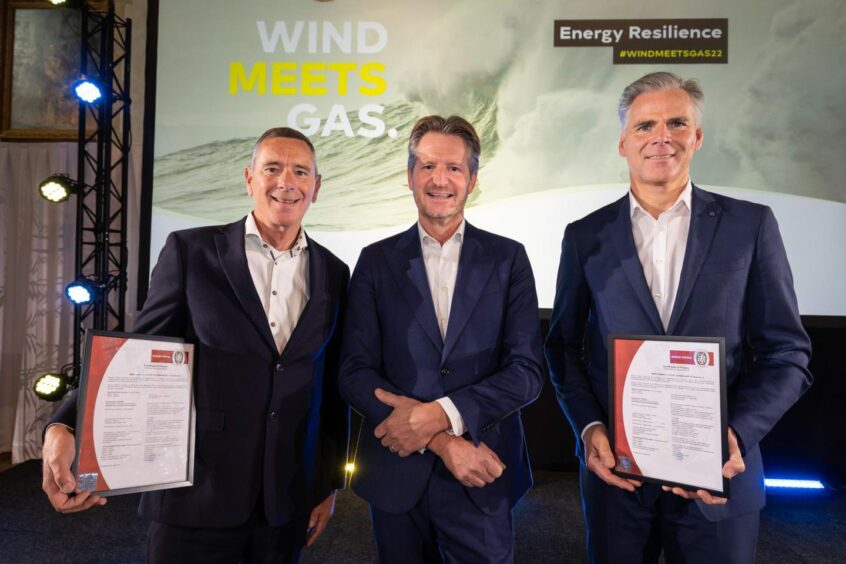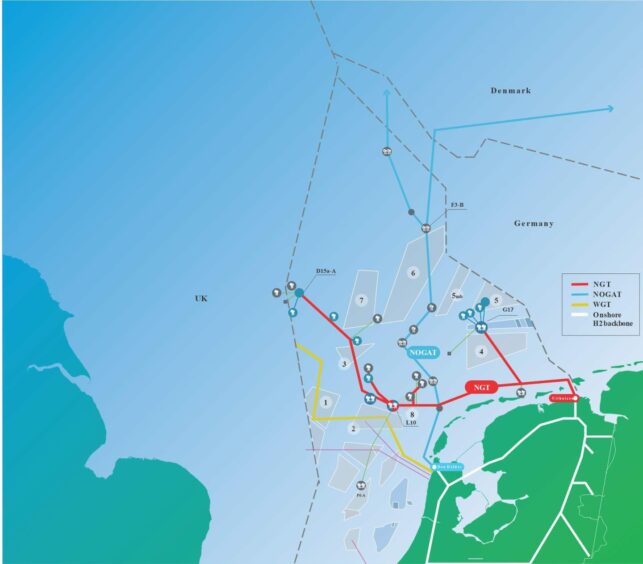
The Netherlands’ Noordgastransport (NGT) and NOGAT have become the first pipeline owners to have their infrastructure certified for green hydrogen transport.
The two companies were issued with a Certificate of Fitness by Bureau Veritas Inspection & Certification, which conducted the survey in accordance with local regulation NEN3656.
In 2018, DNV investigated the robustness of the pipeline steel, which showed the material is suitable and safe for hydrogen transportation. The certificates are now valid until 2062.
NGT owns and operates around 500km of pipeline infrastructure in the region and brings around 30% of Dutch North Sea ashore. After treatment at its plant in Uithuizen, gas is delivered into the country’s transmission grid.
The certified route – currently still use for gas transport – connects the D15a-A platform with the plant at Uithuizen, and NGT director Ron Hagen said the certification shows the line is suitable for transporting “100% pure green hydrogen”.
“This means that our pipeline, which runs from the UK border to Uithuizen, is already ready for the future,” he added.
“Now we are still transporting natural gas, but soon we will be transporting green hydrogen. The capacity of these pipelines, approximately 12-14 gigawatts, will therefore allow us to move faster to large-scale green hydrogen production in the North Sea.”
NOGAT’s pipeline system runs from production platform F3-FB in block F3 to platform L2-FA in block L2, and then on to a gas treatment station in Den Helder, where the gas is brought to specification.
The pipeline system on the Danish continental shelf is also connected to the NOGAT pipeline via the Tyra West – F3 pipeline. This 100-kilometer subsea natural gas pipeline connects the Danish continental shelf with the Dutch continental shelf, enabling the export of Danish gas to northwestern Europe.
NOGAT director Hans Janssen said the certification was “good news” for the company and for the energy transition.
“By making use of existing infrastructure, we are able to make the transition to green hydrogen in the North Sea more swiftly. This can be pure hydrogen, but also a temporary mix of natural gas and green hydrogen,” he said. “Both are molecules and we need both.”
“Besides the fact that re-use is faster because it is already there, it is also cheaper. Moreover, there is no need to create landfall through vulnerable coastal areas or the Wadden Sea. The impact of re-use therefore has a much lower impact on the environment, nature and ecology than building a new pipeline.”
Robert de Lange, Operations Director Industry & IVS Benelux of Bureau Veritas added: “Our assessment and subsequent certification justify the confidence NGT and NOGAT as well as the government and other stakeholders, can have that these pipelines fully meet the ‘fit for purpose’ claim.”
Meanwhile, onshore state-backed transmission operator Gasunie has vowed to build a national hydrogen pipeline network with an initial capacity of 10GW, as the country looks to spur demand for the fuel in a bid to decarbonise.
Recommended for you

 © Supplied by NOGAT/NGT
© Supplied by NOGAT/NGT